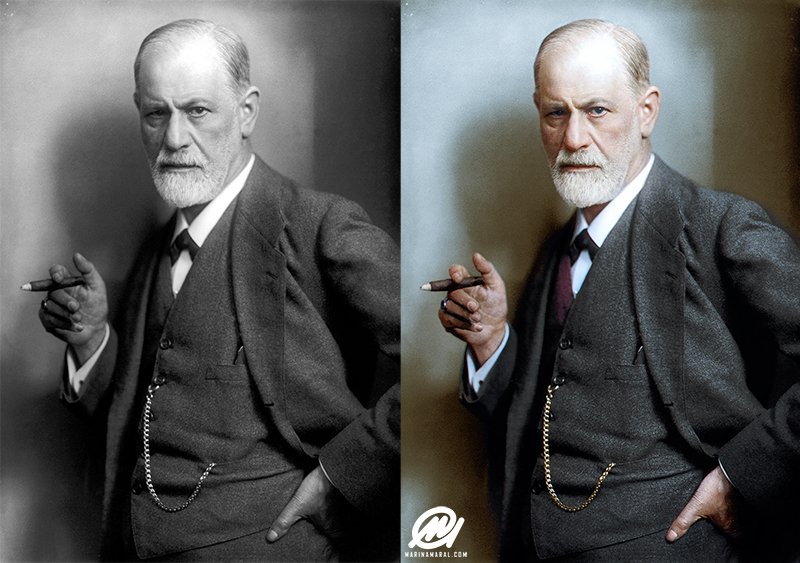#OnThisDay in 1945, the US drops an atomic bomb on Hiroshima. 
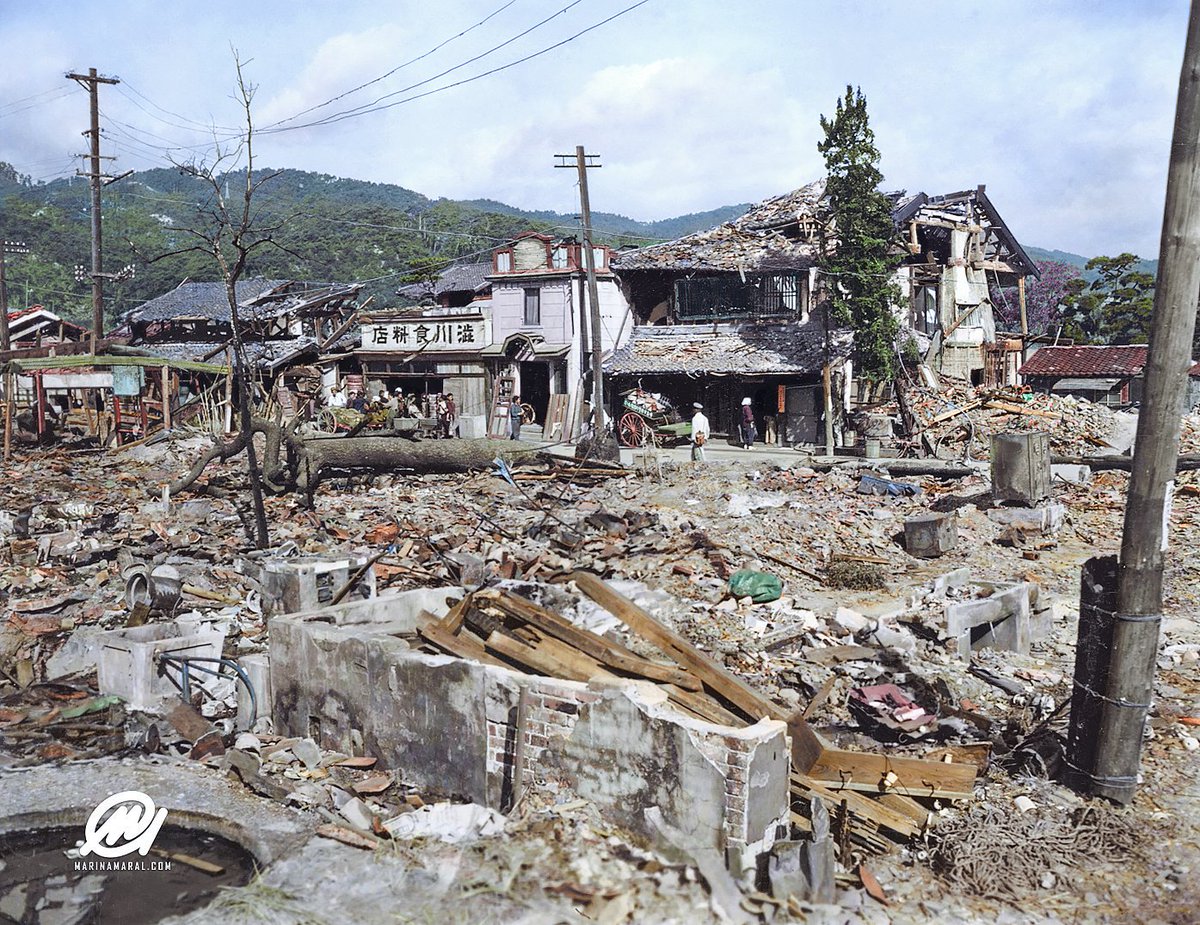
Three days later, on August 9, a Fat Man plutonium implosion-type bomb was dropped by another B-29 on Nagasaki. 

The Allies called for the unconditional surrender of the Imperial Japanese armed forces in the Potsdam Declaration on July 26, 1945—the alternative being "prompt and utter destruction". The Japanese ignored the ultimatum and the war continued. 

By August 1945, the Allies' Manhattan Project had produced two types of atomic bombs, and the 509th Composite Group of the USAAF was equipped with the specialized Silverplate version of the Boeing B-29 Superfortress that could deliver them from Tinian in the Mariana Islands. 

Orders for atomic bombs to be used on four Japanese cities were issued on July 25. On August 6, one of its B-29s dropped a Little Boy uranium gun-type bomb on Hiroshima. 

People on the ground reported a pika (ピカ)—a brilliant flash of light—followed by a don (ドン)—a loud booming sound.
70,000–80,000 people, or around 30% of the population of Hiroshima, were killed by the blast and resultant firestorm, and another 70,000 were injured.

70,000–80,000 people, or around 30% of the population of Hiroshima, were killed by the blast and resultant firestorm, and another 70,000 were injured.

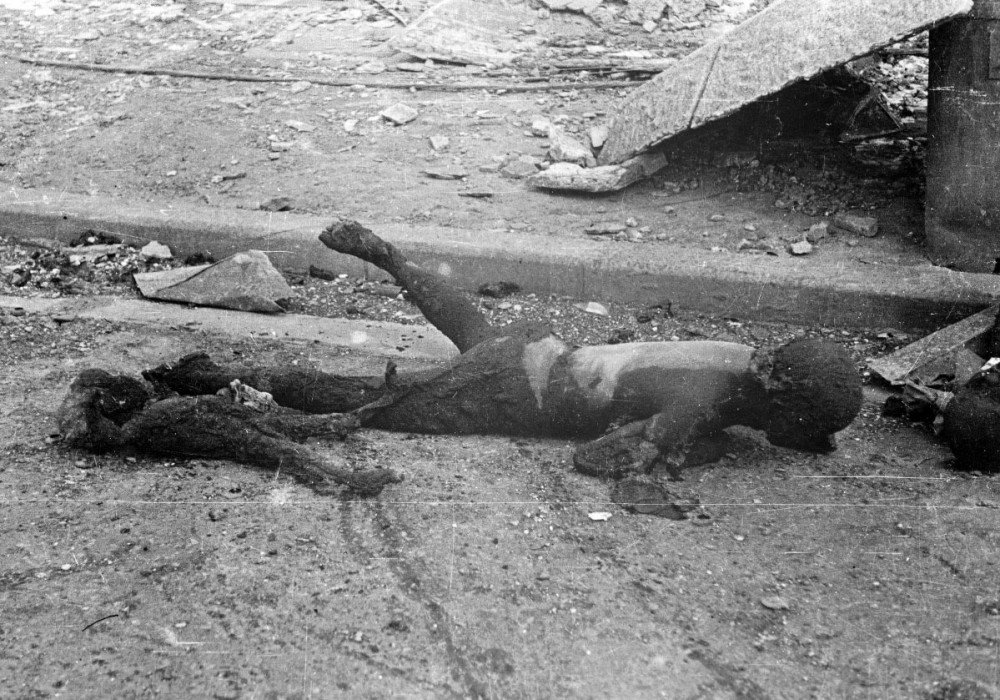
Perhaps as many as 20,000 Japanese military personnel were killed.
U.S. surveys estimated that 4.7 square miles (12 km2) of the city were destroyed. Japanese officials determined that 69% of Hiroshima's buildings were destroyed and another 6–7% damaged.
U.S. surveys estimated that 4.7 square miles (12 km2) of the city were destroyed. Japanese officials determined that 69% of Hiroshima's buildings were destroyed and another 6–7% damaged.

Some of the reinforced concrete buildings in Hiroshima had been very strongly constructed because of the earthquake danger in Japan, and their framework did not collapse even though they were fairly close to the blast center.
Since the bomb detonated in the air, the blast was directed more downward than sideways, which was largely responsible for the survival of the Prefectural Industrial Promotional Hall, now commonly known as the Genbaku (A-bomb) dome. 

This building was designed and built by the Czech architect Jan Letzel, and was only 150 m (490 ft) from ground zero. The ruin was named Hiroshima Peace Memorial and was made a UNESCO World Heritage Site in 1996 over the objections of the United States and China.
The bombing started fires that spread rapidly through timber and paper homes. As in other Japanese cities, the firebreaks proved ineffective. The intense fires started gutted everything in a 2 kilometers (1.2 mi) radius. 

The air raid warning had been cleared at 07:31, and many people were outside, going about their activities. 

Over 90% of the doctors and 93% of the nurses in Hiroshima were killed or injured—most had been in the downtown area which received the greatest damage. The hospitals were destroyed or heavily damaged.
Photo taken from the roof of the Red Cross Hospital.
Photo taken from the roof of the Red Cross Hospital.

Only one doctor, Terufumi Sasaki, remained on duty at the Red Cross Hospital.
Nonetheless, by early afternoon, the police and volunteers had established evacuation centres at hospitals, schools and tram stations, and a morgue was established in the Asano library.
Nonetheless, by early afternoon, the police and volunteers had established evacuation centres at hospitals, schools and tram stations, and a morgue was established in the Asano library.

Most elements of the Japanese Second General Army headquarters were at physical training on the grounds of Hiroshima Castle, barely 900 yards (820 m) from the hypocenter. The attack killed 3,243 troops on the parade ground.
Since Mayor Senkichi Awaya had been killed while eating breakfast with his son and granddaughter at the mayoral residence, Field Marshal Hata, who was only slightly wounded, took over the administration of the city, and coordinated relief efforts. 

Many of his staff had been killed or fatally wounded, including a Korean prince of the Joseon Dynasty, Yi Wu, who was serving as a lieutenant colonel in the Japanese Army. Hata's senior surviving staff officer was the wounded Colonel Kumao Imoto, who acted as his chief of staff.
Soldiers from the undamaged Hiroshima Ujina Harbor used suicide boats, intended to repel the American invasion, to collect the wounded and take them down the rivers to the military hospital at Ujina. 
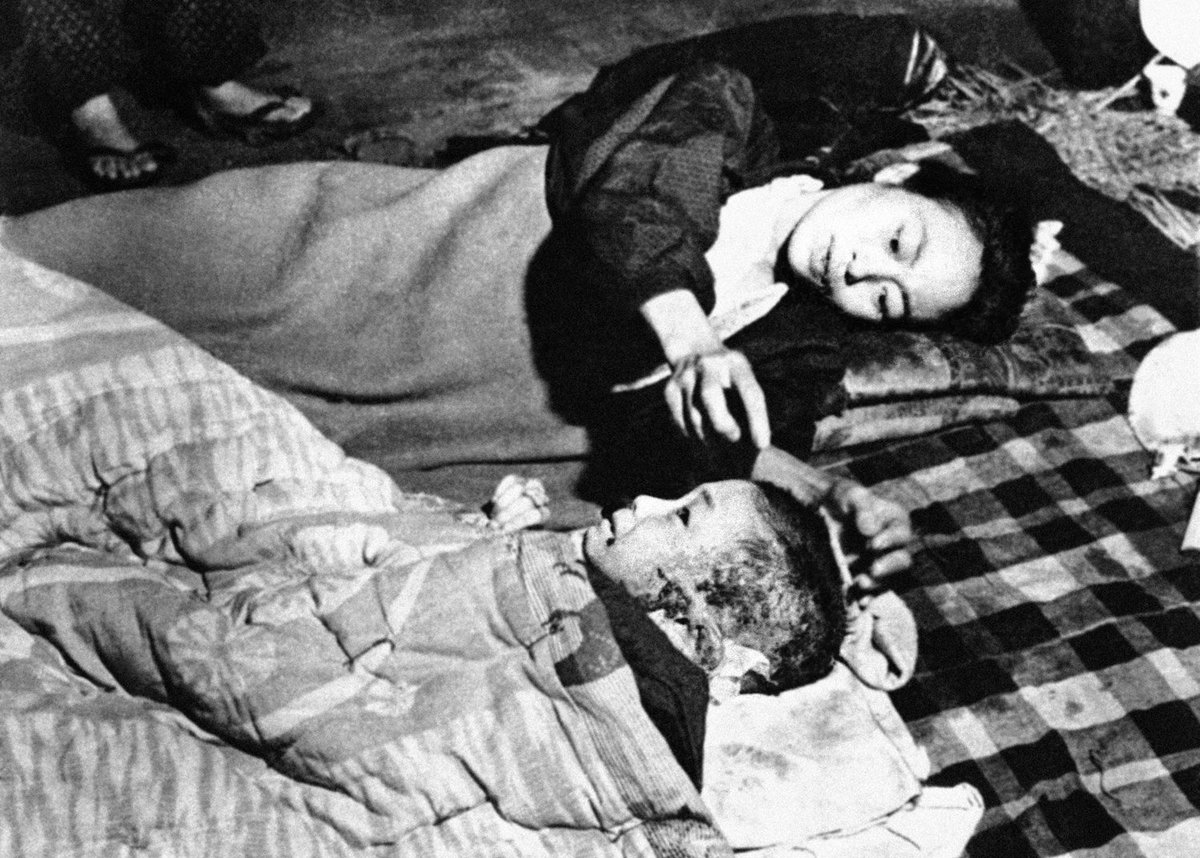
Twelve American airmen were imprisoned at the Chugoku Military Police Headquarters, about 400 m from the hypocenter of the blast.
Most died instantly, although two were reported to have been executed by their captors, and two prisoners badly injured by the bombing were left next to the Aioi Bridge by the Kempei Tai, where they were stoned to death.
The Tokyo control operator of the Japan Broadcasting Corporation noticed that the Hiroshima station had gone off the air. He tried to re-establish his program by using another telephone line, but it too had failed.
About 20 minutes later the Tokyo railroad telegraph center realized that the main line telegraph had stopped working just north of Hiroshima.
Military bases repeatedly tried to call the Army Control Station in Hiroshima. The complete silence from that city puzzled the General Staff; they knew that no large enemy raid had occurred and that no sizeable store of explosives was in Hiroshima at that time.
A young officer was instructed to fly immediately to Hiroshima, to land, survey the damage, and return to Tokyo with reliable information.
After flying for about three hours, while still nearly 160 km from Hiroshima, he and his pilot saw a great cloud of smoke from the bomb.
After flying for about three hours, while still nearly 160 km from Hiroshima, he and his pilot saw a great cloud of smoke from the bomb.

After circling the city in order to survey the damage they landed south of the city, where the staff officer, after reporting to Tokyo, began to organize relief measures.
Tokyo's first indication that the city had been destroyed by a new type of bomb came from President Truman's announcement of the strike, sixteen hours later.
Truman then warned Japan: "If they do not now accept our terms, they may expect a rain of ruin from the air, the like of which has never been seen on this earth. Behind this air attack will follow sea and land forces in such numbers and power as they have not yet seen"
Leaflet AB12, with information on the Hiroshima bomb and a warning to civilians to petition the Emperor to surrender was dropped over Japan beginning on August 9, by the 509th Composite Group. 

Prime Minister Suzuki felt compelled to meet the Japanese press, to whom he reiterated his government's commitment to ignore the Allies' demands and fight on.
At two minutes past midnight on August 9, Tokyo time, Soviet infantry, armor, and air forces had launched the Manchurian Strategic Offensive Operation.
4 hours later, word reached Tokyo of the Soviet Union's official declaration of war. The senior leadership of the Japanese Army began preparations to impose martial law on the nation in order to stop anyone attempting to make peace.
On August 7, a day after Hiroshima was destroyed, Dr. Yoshio Nishina and other atomic physicists arrived at the city, and carefully examined the damage. They then went back to Tokyo and told the cabinet that Hiroshima was indeed destroyed by an atomic bomb.
Admiral Soemu Toyoda estimated that no more than two additional bombs could be readied, so they decided to endure the remaining attacks, acknowledging "there would be more destruction but the war would go on".
American Magic codebreakers intercepted the cabinet's messages.
American Magic codebreakers intercepted the cabinet's messages.
Purnell, Parsons, Tibbets, Spaatz, and LeMay met on Guam that same day to discuss what should be done next.
Since there was no indication of Japan surrendering, they decided to proceed with dropping another bomb.
Since there was no indication of Japan surrendering, they decided to proceed with dropping another bomb.
At 03:49 on the morning of August 9, 1945, Bockscar, flown by Sweeney's crew, carried Fat Man, with Kokura as the primary target and Nagasaki the secondary target.
The mission plan for the second attack was nearly identical to that of the Hiroshima mission.
The mission plan for the second attack was nearly identical to that of the Hiroshima mission.
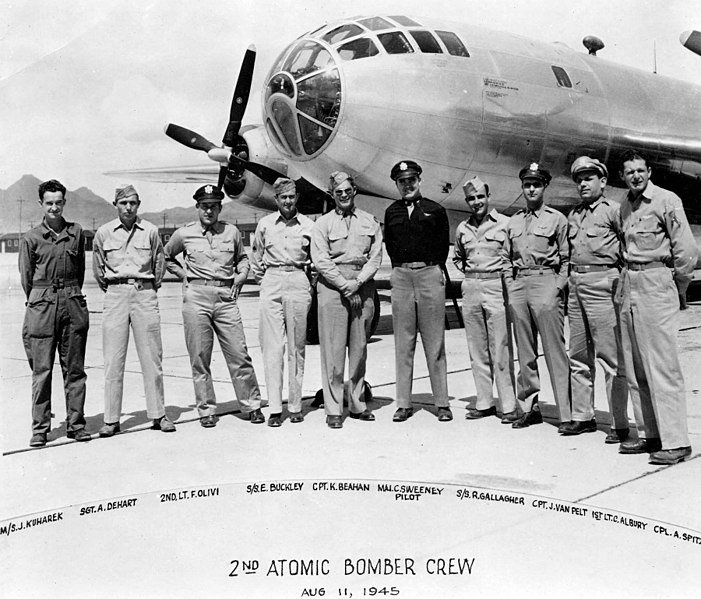
After exceeding the original departure time limit by nearly a half-hour, Bockscar, accompanied by The Great Artiste, proceeded to Kokura, 30 minutes away.
The delay at the rendezvous had resulted in clouds and drifting smoke over Kokura from fires started by a major firebombing raid by 224 B-29s on nearby Yahata the previous day.
Additionally, the Yawata Steel Works intentionally burned coal tar, to produce black smoke. The clouds and smoke resulted in 70% of the area over Kokura being covered, obscuring the aiming point.
Three bomb runs were made over the next 50 minutes, burning fuel and exposing the aircraft repeatedly to the heavy defenses around Kokura, but the bombardier was unable to drop visually.
By the time of the third bomb run, Japanese antiaircraft fire was getting close, and Second Lieutenant Jacob Beser, who was monitoring Japanese communications, reported activity on the Japanese fighter direction radio bands.
After three runs over the city, and with fuel running low because of the failed fuel pump, Bockscar and The Great Artiste headed for their secondary target, Nagasaki. 
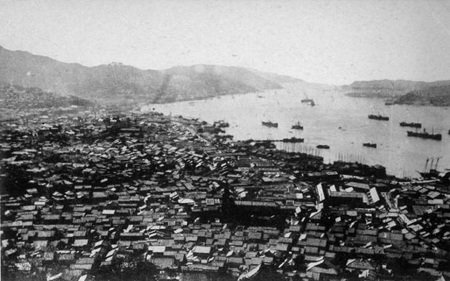
At about 07:50 Japanese time, an air raid alert was sounded in Nagasaki, but the "all clear" signal was given at 08:30. When two B-29 Superfortresses were sighted at 10:53, the Japanese apparently assumed that the planes were only on reconnaissance and no further alarm was given.
These instruments also contained a letter to Professor Ryokichi Sagane, a physicist who studied with 3 of the scientists responsible for the atomic bomb at the University of California, urging him to tell the public about the danger involved with these weapons.
At 11:01, a last-minute break in the clouds over Nagasaki allowed Bockscar's bombardier, Captain Kermit Beahan, to visually sight the target as ordered.
The Fat Man weapon, containing a core of about 5 kg (11 lb) of plutonium, was dropped over the city's industrial valley.
The Fat Man weapon, containing a core of about 5 kg (11 lb) of plutonium, was dropped over the city's industrial valley.

Although the bomb was more powerful than the one used on Hiroshima, the effect was confined by hillsides to the narrow Urakami Valley. Of 7,500 Japanese employees who worked inside the Mitsubishi Munitions plant, including mobilized students and regular workers,6,200 were killed. 

Some 17,000–22,000 others who worked in other war plants and factories in the city died as well.
Casualty estimates for immediate deaths vary widely, ranging from 22,000 to 75,000. At least 35,000–40,000 people were killed and 60,000 others injured.
Casualty estimates for immediate deaths vary widely, ranging from 22,000 to 75,000. At least 35,000–40,000 people were killed and 60,000 others injured.

Because of the presence of undocumented foreign workers, and a number of military personnel in transit, there are great discrepancies in the estimates of total deaths by the end of 1945; a range of 39,000 to 80,000 can be found in various studies.
Unlike Hiroshima's military death toll, only 150 Japanese soldiers were killed instantly. At least eight known POWs died from the bombing and as many as 13 may have died, including a British prisoner of war, Royal Air Force Corporal Ronald Shaw, and seven Dutch POWs.
One American POW, Joe Kieyoomia, was in Nagasaki at the time of the bombing but survived, reportedly having been shielded from the effects of the bomb by the concrete walls of his cell. There were 24 Australian POWs in Nagasaki, all of whom survived.
The radius of total destruction was about 1 mi (1.6 km), followed by fires across the northern portion of the city to 2 mi (3.2 km) south of the bomb. About 58% of the Mitsubishi Arms Plant was damaged, and about 78% of the Mitsubishi Steel Works.
The Nagasaki Prefecture Report on the bombing characterized Nagasaki as "like a graveyard with not a tombstone standing". 

As in Hiroshima, the bombing badly dislocated the city's medical facilities. A makeshift hospital was established at the Shinkozen Primary School, which served as the main medical center. The trains were still running, and evacuated many victims to hospitals in nearby towns.
Takashi Nagai was a doctor working in the radiology department of Nagasaki Medical College Hospital. He received a serious injury that severed his right temporal artery but joined the rest of the surviving medical staff in treating bombing victims. 

Partially incinerated child in Nagasaki, one day after the blast and building fires had subsided. Once the American forces had Japan under their military control, they imposed censorship on all such images. These restrictions were lifted in 1952. 

Groves expected to have another atomic bomb ready for use on August 19, with three more in September and a further three in October.
On August 10, he sent a memorandum to Marshall, who endorsed the memo with the hand-written comment, "It is not to be released over Japan without express authority from the President", something Truman had requested that day. 

This modified the previous order that the target cities were to be attacked with atomic bombs "as made ready".
At Los Alamos, technicians worked 24 hours straight to cast another plutonium core.
At Los Alamos, technicians worked 24 hours straight to cast another plutonium core.
Until August 9, Japan's war council still insisted on its four conditions for surrender. The full cabinet met on 14:30 on August 9, and spent most of the day debating surrender. Anami conceded that victory was unlikely, but argued in favor of continuing the war nonetheless.
The meeting ended at 17:30, with no decision having been reached. Suzuki went to the palace to report on the outcome of the meeting, where he met with Kōichi Kido, the Lord Keeper of the Privy Seal of Japan.
Kido informed him that the emperor had agreed to hold an imperial conference, and gave a strong indication that the emperor would consent to surrender on condition that kokutai be preserved.
A second cabinet meeting was held at 18:00. Only four ministers supported Anami's position of adhering to the four conditions, but since cabinet decisions had to be unanimous, no decision was reached before it ended at 22:00.
Another meeting commenced at 23:50. No consensus had emerged by 02:00, but the emperor gave his "sacred decision", authorizing the Foreign Minister to notify the Allies that Japan would accept their terms on one condition:
That the declaration "does not comprise any demand which prejudices the prerogatives of His Majesty as a Sovereign ruler."
On August 12 the Emperor informed the imperial family of his decision to surrender.
Hirohito recorded on August 14 his capitulation announcement which was broadcast to the Japanese nation the next day.
Hirohito recorded on August 14 his capitulation announcement which was broadcast to the Japanese nation the next day.
"The enemy now possesses a new and terrible weapon (...); Should we continue to fight, not only would it result in an ultimate collapse and obliteration of the Japanese nation, but also it would lead to the total extinction of human civilization." 

Frequent estimates are that 140,000 people in Hiroshima (39% of the population) and 70,000 people in Nagasaki (28% of the population) died in 1945, though the number which died immediately as a result of exposure to the blast, heat, or due to radiation, is unknown.
A study estimates that from 1950 to 2000, 46% of leukemia deaths and 11% of solid cancers of unspecified lethality, were likely due to radiation from the bombs or some other post-attack city effects. 





While during the preimplantation period, that is 1–10 days following conception, intrauterine radiation exposure of "at least 0.2 Gy" can cause complications of implantation and death of the human embryo.
The number of miscarriages caused by the radiation from the bombings, during this radiosensitive period, is not known.
The survivors of the bombings are called hibakusha (被爆者), a Japanese word that translates to "explosion-affected people". The Japanese government has recognized about 650,000 people as hibakusha.
As of March 31, 2017, 164,621 were still alive, mostly in Japan.
As of March 31, 2017, 164,621 were still alive, mostly in Japan.
The government recognizes about 1% of these as having illnesses caused by radiation.
The memorials in Hiroshima and Nagasaki contain lists of the names of the hibakusha who are known to have died since the bombings.
The memorials in Hiroshima and Nagasaki contain lists of the names of the hibakusha who are known to have died since the bombings.

Updated annually on the anniversaries of the bombings, as of August 2017 the memorials record the names of almost 485,000 hibakushas; 308,725 in Hiroshima and 175,743 in Nagasaki.
If they discuss their background, Hibakusha and their children were (and still are) victims of fear-based discrimination and exclusion when it comes to prospects of marriage or work.
The surviving women of Hiroshima and Nagasaki, that could conceive, who were exposed to substantial amounts of radiation, went on and had children with no higher incidence of abnormalities/birth defects than the rate which is observed in the Japanese average.
Perhaps as many as 200 people from Hiroshima sought refuge in Nagasaki. The 2006 documentary Twice Survived: The Doubly Atomic Bombed of Hiroshima and Nagasaki documented 165 nijū hibakusha, nine of whom claimed to be in the blast zone in both cities.
On March 24, 2009, the Japanese government officially recognized Tsutomu Yamaguchi as a double hibakusha. He died on January 4, 2010, at the age of 93, after a battle with stomach cancer. 

The population of Hiroshima increased from 83,000 soon after the bombing to 146,000 in February 1946. The city was rebuilt after the war, with help from the national government through the Hiroshima Peace Memorial City Construction Law passed in 1949.
Nagasaki was also rebuilt after the war, but was dramatically changed in the process. New temples were built, as well as new churches owing to an increase in the presence of Christianity. Some of the rubble was left as a memorial.
*Done*
• • •
Missing some Tweet in this thread? You can try to
force a refresh









